The Quest for the Perfect Office Chair
Why we haven’t found it yet.
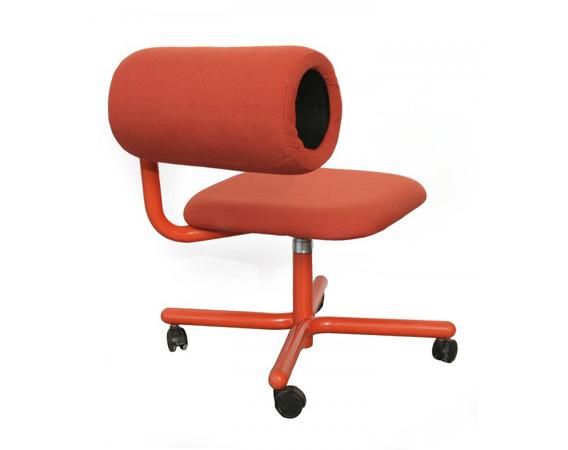
Office chairs are like shoes, but not as much fun. We spend much of our time in them. They emphasize differences in status and taste. They affect the way our bodies feel. But unlike the shoes we wear to work, most of us don’t get to pick out our office chairs. Your work chair is just there, provided for you by your employer.
You suspect that aching in your back might be connected to its shape; that you could adjust it in some way to make it better. You also suspect that the ugly plastic chair at the office is better than the espresso-stained seat you sometimes work from at Starbucks. But if technology can give us an app that allows us to draw “chair” for a friend 1,000 miles away, why hasn’t it also given us the perfect real-life sitting apparatus? What happened with that whole ergonomics thing that became so hot in the ‘80s? Did those guys ever deliver the ideal perch?
The First Documented Evidence of Body-Conscious Seating, 3000 B.C.
Collection of Judge Elbert E. Farman/Metropolitan Museum of Art
Some of the earliest depictions of seating, tiny chairs for the gods in 7500 BC, don’t look all that different from designs today.* Around 3000 B.C., notes Jenny Pynt—who wrote A History of Seating, 3000 BC to 2000 AD with Joy Higgs—these depictions hint at what one might call task-appropriate changes, shifts in design apparently intended to enable the worker to perform more effectively. A three-legged stool with a concave seat, tilting forward, appears to have been designed to make hammering easier.
The 1850s: Seating So Comfortable It Was Deemed Immoral
Courtesy Jonathan Olivares/A Taxonomy of Office Chairs/Phaidon.
In the thousands of years that followed, endless variations of the chair emerged: thrones for kings and stools for paupers. Some were functional, some beautiful. Few chairs, however, were designed with the movement of the body as a prime consideration. It was only around 1850 in the United States that a group of engineers began to examine how chairs could promote health and comfort by emphasizing posture and movement. The resulting seating was known as patent seating because its designers—mostly engineers and a few doctors—took out patents for their creations.
Thomas E. Warren’s Centripetal Spring Armchair, one of the most revolutionary models, made its debut at the Great Exhibition in London in 1851. The cast-iron and velvet chair could swivel and tilt in any direction. According to Jonathan Olivares, who has carefully studied the features of just about every known office chair for his book, A Taxonomy of Office Chairs, it had just about every feature that modern office chairs have today, with the exception of adjustable lumbar support. International reaction to the chair, however, was negative. It was so comfortable that people deemed it immoral, Pynt explains in her paper, "Nineteenth Century Patent Seating" in the Journal of Design History. In the Victorian era, upright posture on a rigid, unsupportive seat provided an opportunity to demonstrate refinement and willpower and thereby morality.
More Smart Designs That Got No Love
Despite general skepticism about patent seating, the late 19th century was an exceptionally innovative time in chair design. Engineers and doctors used studies of bodily movement to create chairs that made tasks like sewing, surgery, hairdressing, and dentistry easier. This period saw the development of chairs with adjustable backrests and seat heights, seat-tilt tension, and other features that would be recognizable in ergonomic chairs more than a century later. "By the 1890s, the barber’s chair raised and lowered, reclined and revolved on a hydraulic mechanism," Pynt writes, noting that this would not be used in office seating until the middle of the 20th century.
Perhaps because of their love of the rocking chair, Americans were far more comfortable with movement in their chairs than their European counterparts. Still, these chairs didn’t have what it took to make their way into the parlor. Aside from the whole Victorian notion that discomfort was classy, patent chairs didn’t have the refined look that made people want to show off their purchase. Consequently, most people continued to sit on stiff, elaborately embellished chairs. When they cooed at innovation, it was generally aesthetic. Even in the office—aside from certain very specialized fields—patent chairs were rejected.
Frank Lloyd Wright’s Larkin Building Chairs, 1904
Although many aesthetically influential office chairs emerged at the beginning of the 20th century, it was a bad time for body-conscious design. Frank Lloyd Wright, for example, crafted a number of impressive chairs, but like other chair-designing architects, he was less interested in matching the chair to the human body than to the surrounding décor. In a couple of instances, he did acknowledge human movement. The Larkin Office Building, which he designed in 1904, featured three-legged office chairs for typists. When the typist leaned forward, the chair tilted with her. When complaints emerged about what became known as “the suicide chair”—because of its frightening instability—Wright defended his design, claiming that it forced good posture. (According to Edward Tenner’s book, Our Own Devices, Wright attempted to install the same three-legged chair in the Johnson Wax building in 1939 but received so much resistance that he eventually added front legs.)
The executive chair he created for the same building, still considered one of the greatest office chairs of all time, had a swivel mechanism for height adjustment. The chair, which now sits at the Metropolitan Museum of Art, was not particularly body conscious in any other way, which is why its elevated status continues to make many an ergonomist cringe.
The fact that Wright designed two utterly different chairs for two types of worker was representative of the time. Chairs indicated one’s status within the company, even from afar. At the time, men usually had one type of chair, and women had another; something that did not change for many decades.
The 1920s, When a Backrest Made You Lazy
In the 1920s, the notion was prevalent that sitting comfortably made for laziness, and it was not uncommon to see workers laboring in factories on backless benches. Reacting to complaints of declining productivity and illness, particularly among women—a growing presence in the workforce—a company called Tan-Sad marketed a swiveling chair with a curved backrest that could be adjusted to suit the height of each worker. Around the same time, William Ferris created the Do/More Chair, which he marketed as helping to prevent hemorrhoids, kidney trouble, constipation, and a whole host of other problems caused by slouching in competitors’ chairs. Later models also promised to tone executives’ abs.
The 1950s and ’60s: Time To Look Cool
Courtesy Jonathan Olivares/A Taxonomy of Office Chaires/Phaidon.
There are varying accounts of who popularized the term ergonomics. What is clear, however, is that developments during WWII—nearly 100 years later—brought the field to the fore. Researchers used ergonomic principles to improve cockpit design and factory production in ways that saved lives and money.
When the war ended, a vast array of research about the workplace and our bodies was just sitting there. But neither designers nor consumers cared particularly. Just as had happened 100 years earlier during the advent of the patent chair, aesthetics suppressed developments in body-conscious design. Americans no longer admired grandiose, overstuffed European designs, but the new furniture—stiff, sleek things made of wire, plastic, and wood—wasn’t any more body conscious.
There were a few exceptions, of course. George Nelson’s MAA chair for Herman Miller (1958) was novel because its backrest and seat tilted independently, creating a new range of positions for the body at work.
The Early ‘70s, When Ergonomics Became Chic in Design Circles
Metropolitan Museum of Art.
But technology is irrelevant until a designer embraces it and makes it look sexy. In the ’70s, industrial designers began to develop an interest in ergonomic principles. Two critical books by American industrial designers, Henry Dreyfuss’ Measure of Man and Niels Diffrient’s Humanscale, presented the complicated discoveries of ergonomists in a way that was accessible to other designers.
In some ways they oversimplified the research, says Rani Lueder, an ergonomist who has been consulting for chair companies for several decades. But these simplified guides helped kick-start exploration. Diffrient, along with designers Wolfgang Mueller and William Stumpf, began playing around with new ways of applying this research, devising ways to support the contours of the body with molded polyurethane foam.
The Ergon Chair, 1976: Introducing Ergonomics to a Broader Audience
Courtesy Jonathan Olivares/A Taxonomy of Offie Chairs/Phaidon.
In 1974, modern manufacturing powerhouse Herman Miller invited Stumpf to apply his research and develop a chair. Stumpf had spent the ’60s and early ’70s at the University of Wisconsin–Madison’s environmental design center, studying the way the way people sat, with input from specialists in orthopedic and vascular medicine.
The result of this collaboration was the Ergon Chair, first released in 1976. Though ergonomics experts don’t agree on much, they are unanimous about the importance of this chair in bringing the notion of ergonomic seating to a greater audience. The chair didn’t have moving parts, but its use of molded foam was radical. The chair managed to feel cushy while still providing critical posture support and that—along with the fact that anything Herman Miller did got a lot of attention, Lueder says—made it a really big deal.
The Late ’70s: Supportive Chairs That Had Style
The Metropolitan Museum of Art.
The Ergon chair was revolutionary in terms of engineering. Beautiful it was not. The Vertebra chair, on the other hand, was a body-conscious chair that looked like art.
The Metropolitan Museum of Art calls Giancarlo Piretti and Emilio Ambasz’s 1976 creation “the first automatically adjustable office chair, designed to respond and adapt to the movements of the user's body and provide comfort and support.” The chair won Argentine-born Emilio Ambasz the ID Award for Excellence of Design in 1977. Pynt—and other chair experts—will point out that this functionality had already been achieved in a less elegant way, several decades before. But there’s no denying that the Vertebra had style.
The Kneeling Chair, 1979
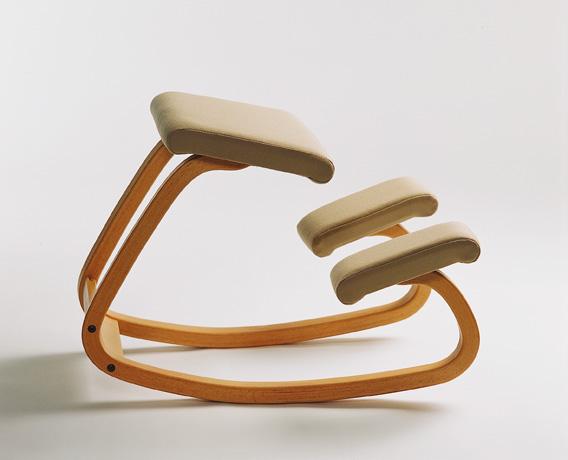
Courtesy Varier Furniture AS.
By 1980, office work was one of the fastest growing areas of the job market in the United States. “The demand [is] heaviest for clerk-typists, clerks, secretaries and administrative clerks,” an AP article on summer jobs advised in 1980. That year, Norwegian designers Peter Opsvik and Svein Gusrud presented an alternative solution to reports of back pain and other health problems associated with long periods in front of a desk: Don’t sit, kneel. The Norwegian Balans Chair was a total renegade in a largely homogenous sea of seating solutions, tossing out the traditional right angle altogether and embracing research about the advantages of forward-tilting seating. Galen Cranz, a professor of architecture at UC Berkeley, who wrote the illuminating book The Chair: Rethinking Culture, Body and Design, calls it the most radical seating design of the twentieth century.
But cultural challenges proved too great to surmount. The chair never took off in a significant way. It didn’t help, either, that imitators created similar kneeling chairs without the meticulously thought-out design, leading to complaints of knee pain and other problems that are not likely to be as prominent in the original Opsvik.
The ’80s: Ergonomics Is All the Rage
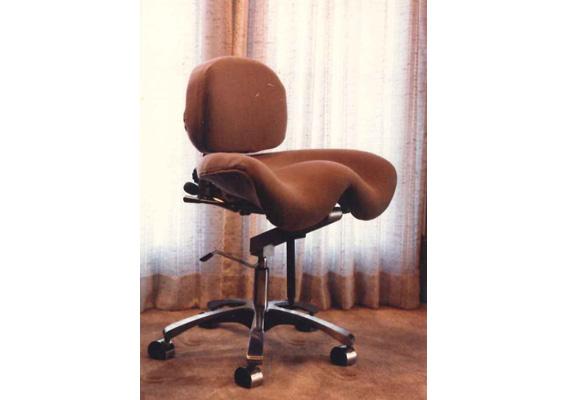
Courtesy Jerome Congleton.
During the 1980s, the computer became an office staple, and computer-related injury reports were on the rise. A number of significant ergonomic chairs enabling a greater range of postures emerged during this time. The Hag Capisco, another Opsvik creation, supported sitting sideways and backward. Jerome Congleton’s Pos-Chair (1985) embraced research by NASA, featuring a seat supporting what he called a natural, zero-gravity perching posture. The FS Chair by Wilkahn (1980), meanwhile, re-engineered movement of the chair, providing simultaneous yet distinct movement of the backrest and seat.
The Aeron Chair, 1994: Hello, Lumbar Support!
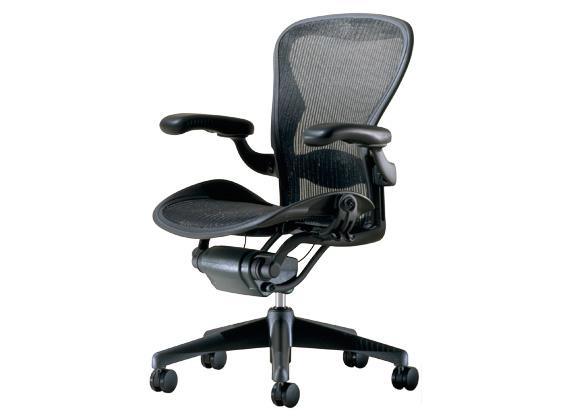
Courtesy Jonathan Olivares/A Taxonomy of Office Chairs/Phaidon.
The Aeron Chair is probably the only ergonomic office chair that people outside the chair world know by name. Developed by William Stumpf and Donald Chadwick for Herman Miller, it made its debut in 1994. The chair was novel in its use of lower back—or lumbar—support, incorporating a molded pad into the curvature of the backrest. It was also game-changer in the way it moved with people, supporting them through a variety of postures, whether reclining on the phone or leaning forward to type. Beyond these engineering details, what made the Aeron Chair revolutionary was the way it was sold: in three sizes—A (small), B (medium), and C (large)—rather than in executive and secretary models. This strategy promoted the idea that a chair should fit an individual as precisely as a shoe does and redefined the aesthetics of the workplace hierarchy. A number of other chair companies followed suit.
Of course, all of this great body-conscious design would be irrelevant if no one put up the extra money to provide workers with nice chairs. But an increasing number of lawsuits about workplace injuries incurred by extended computer use helped employers see the value, and by the 1990s, companies commonly invested hundreds of dollars per employee in ergonomic office chairs.
Donald Judd Box Chair, 1995
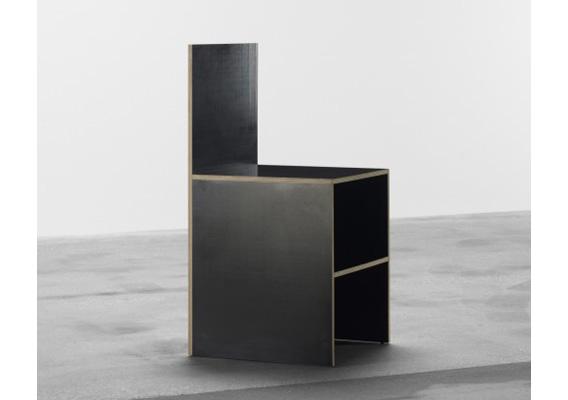
There will always be a designer who drinks in all the research, swirls it around, and spits it right back in the world’s face. In 1995, just one year after the emergence of the Aeron chair, that person was artist and sculptor Donald Judd, Pynt says. He took the grand new appreciation for back support and mobility and created a straight-backed boxlike chair. When challenged about its comfort, he maintained that a “straight chair was best for eating and writing.” His design continues to make appearances at places like the Cooper Hewitt Museum.
The 2000s: How Do You Measure a Good Chair?
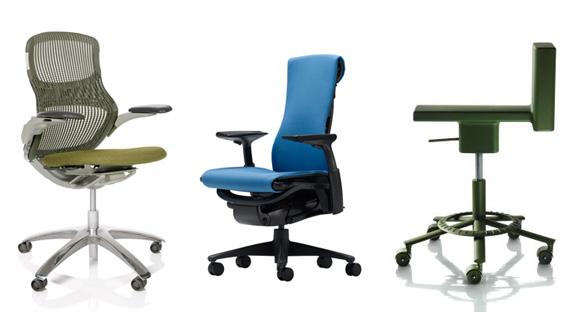
Photos courtesy Knoll; Herman Miller; Konstantin Grcic.
In the years since the launch of the Aeron, many impressive chairs have emerged. (Herman Miller’s Embody Chair is one.) During this same period, though, the word ergonomic has become utterly meaningless. Though there is more—and better—research than ever, there is still no standard way to define whether a chair is ergonomic or not. And there is no widely agreed-upon way to measure how successful a chair is. Ergonomists will be the first to tell you that this is the trouble with their trade. Theirs is a field based on concrete research, on close study of the body as a form. And yet it’s a field steeped in subjectivity, plagued by onerous, impossible questions like “What is comfort?” or “What should an office chair accomplish?” (Alertness? Relaxation? Inspiration to occasionally move around? Encouragement to sit immobile for days?)
Are We Over Chairs?
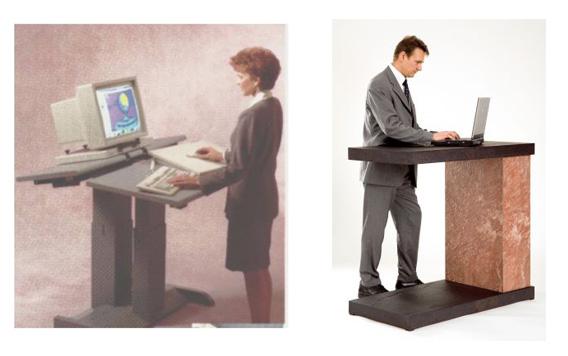
Interestingly, like runners—some of whom are ditching shoes in favor of bare feet—an increasing number of people are declining to sit at all, opting instead for stand-up desks. Some office designers have embraced the trend, creating sit-stand work stations.
Others argue, however, that we shouldn’t give up on sitting yet. They contend that the insistence on a one-size-fits-all chair—a single highly adjustable unit for everyone in the office—allows users (and their bosses) to overlook the importance of finding the right chair for every individual. They suggest that users are overwhelmed by adjustable features they don’t know how to utilize, that they are not taking advantage of the clever engineering beneath them.
But What Do Ergonomics Experts Sit In?
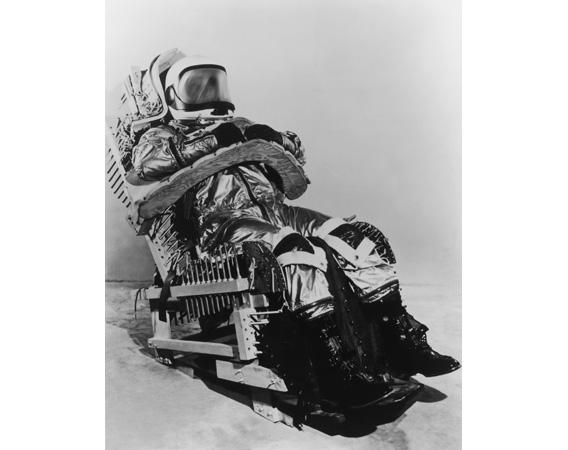
FPG/Hulton Archive/Getty Images.
In the process of reporting this story, I asked at least four chair experts what they sit in—hoping there would be one unanimous answer. To my chagrin, most said they use different chairs for different occasions. Sometimes they want to lounge, sometimes to perch, sometimes to sit supported by Herman Miller-crafted back support.
Unfortunately for those of us craving a simple answer, there isn’t one. There will never be a perfect office chair, one that fits everyone in the world during all parts of their day, any more than there will be a perfect shoe. What is clear, however, is that some chairs, like some shoes, are much better for the body than others. If you run every day in platforms, you are going to hurt yourself. If you pay attention to the shape of your feet and how different shoes make you feel, you may avoid injury. After analyzing every office chair known to man, Olivares has developed a rather simple method for figuring out whether a chair is good or not. “You have to dig in for three or four hours,” he explained. “You want to get up from that and not feel like death.”
End Note: In the process of writing and researching this piece, Heather Murphy sat in one office chair, two living room chairs, one squooshy couch seat, one restaurant stool, and one bus seat. She made approximately five tweaks to her office chair and two to her work station in the process of consuming the ergonomics literature. Thus far, this seems to have had a 20 percent positive impact on reducing the feeling of death.
Don’t forget to read about the design of the key, the book, and the other items featured in our series on the evolution of everyday objects.
*Correction, June 1, 2012: This article originally suggested that, according to scholar Jenny Pynt, the first chairs emerged in ancient Egypt. Although that is the earliest seating Pynt explores in her book, imagery of seating goes back further to Neolithic Times.
Correction, May 30, 2012: A caption accompanying the photographs of three chairs (The 2000s: How Do You Measure a Good Chair?) originally misidentified the Herman Miller Embody chair as the Knoll Generation chair and vice versa.
